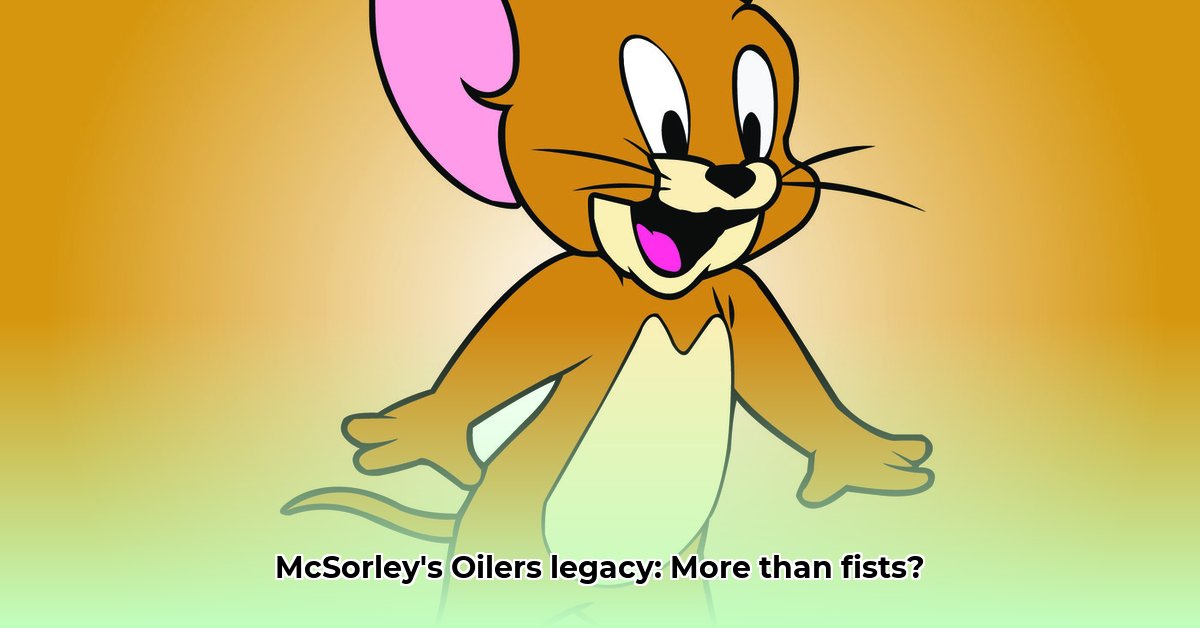Marty McSorley. The name evokes strong reactions among hockey fans. Was he a loyal teammate, a fierce protector of superstars like Wayne Gretzky, and a skilled player in his own right? Or was his career defined by a controversial incident that forever altered the NHL? This isn’t just a story about fights and penalties; it’s a nuanced exploration of the man, his impact on the Edmonton Oilers, and how the evolving rules of the game shaped – and ultimately ended – his career. We’ll delve into his role, his methods, the controversies, and how his story reflects the ever-changing landscape of hockey.
Examining Marty McSorley’s Protective Role for Wayne Gretzky
Marty McSorley’s tenure with the Edmonton Oilers was more than just about playing hockey; it was about being an integral part of a dynasty. He was the team’s protector, the enforcer whose role was vital in the often-brutal environment of NHL hockey during his era. Imagine Wayne Gretzky, displaying his unparalleled skill, yet constantly facing relentless physical attacks. McSorley was there, the ever-present guardian, ensuring Gretzky could focus on creating magic on the ice. But his legacy is more complex than just throwing punches. Was an enforcer a necessary component to a successful team in that era, and how should we view that role today?
Unveiling Marty McSorley’s Skillset Beyond Physical Enforcement
While McSorley is primarily remembered for his fighting ability – and he was certainly a formidable fighter – he possessed a broader skillset. He demonstrated surprising offensive capabilities, occasionally earning time on the power play. This often-overlooked dimension of his game reveals a versatility that transcended the role of a pure enforcer. McSorley wasn’t a one-dimensional player solely focused on inflicting pain. His presence on the ice, the potential for physical retaliation, influenced the game, keeping opponents in check. This subtle, yet significant, impact likely contributed to the Oilers’ overall success. In a strategic sense, McSorley was a multifaceted player, capable of contributing beyond the physical aspects of the game.
Understanding the Transformation of the Enforcer Role in the NHL
The role of the “enforcer” has undergone a dramatic transformation throughout hockey history. During McSorley’s peak, fighting was more accepted, and penalties were less severe. However, as player safety became a paramount concern, and the long-term consequences of repeated head trauma gained recognition, the game’s fundamental principles shifted. This transformation makes evaluating McSorley’s actions challenging. The context of the rules at the time, or the lack thereof, must be considered alongside the heightened awareness of concussion dangers.
The Donald Brashear Incident’s Impact on McSorley’s Career and NHL Rules
The incident with Donald Brashear in 2000 undeniably defines McSorley’s legacy. While the details are widely known, the event remains deeply complex. Was it a split-second error in judgment, a surge of uncontrollable anger, a calculated act, or a convergence of these factors? The extended suspension imposed – one of the longest in NHL history – reflected a shift in societal views on violence in sports, and a heightened awareness of the dangers of head injuries. It is essential to discuss this pivotal moment when considering McSorley’s career, as it ignited a broader discussion about player safety, individual accountability, and evolving expectations within professional sports. The incident dramatically altered the trajectory of his career and influenced discussions surrounding the sport for years to come.
Contradictions in McSorley’s Oilers Career
Marty McSorley’s time with the Oilers showcases the inherent contradictions within professional sports. He contributed to the team’s success protecting star players, while also possessing surprising versatility. However, his legacy is inextricably linked to the Brashear incident, which resulted in the longest suspension in NHL history for an on-ice infraction. It serves as a reminder of the human cost associated with violence in the game, the lasting consequences, and the evolving standards of player safety. McSorley’s story exemplifies the transition of sports, navigating the balance between tradition and a growing emphasis on health and safety. What should his lasting impact be?
Delving Into How NHL Rule Changes Shaped McSorley’s Path
Marty McSorley’s seventeen-season NHL career was marked by both highs and lows. Despite going undrafted, he carved out a long and successful career, but is undeniably linked to a pivotal moment that changed the rules of the game and his life forever. Let’s explore the journey. The rules and penalties in hockey have changed dramatically over time, including fighting majors (penalties for engaging in a fight).
Exploring Marty McSorley’s Rise From Undrafted to Enforcer
McSorley’s path to the NHL was unconventional. Despite going undrafted, he relied on unwavering determination and grit. He became a quintessential enforcer, which defined much of his playing style. His size and willingness to fight became his trademarks. He wasn’t known for finesse, but his physical presence affected games distinctly. As a physical deterrent, he served as a bodyguard for skilled teammates. His intangible value boosted team morale and confidence. Teams valued players with his skill set during that era.
Unpacking the Brashear Incident as a Watershed Moment
The incident with Donald Brashear in 2000 drastically altered McSorley’s career. The stick swing and resulting injury brought unprecedented scrutiny, and symbolized the NHL’s battle to deal with its violent past. The league responded with the harshest penalty ever handed out for on-ice violence, reflecting a growing awareness of player safety. How did NHL rules changes impact Marty McSorley’s career? The league’s response signaled a shift away from tolerating unchecked violence.
Examining the Evolving Landscape of NHL Enforcement
The fallout from the Brashear incident extended beyond McSorley. It spurred the NHL to re-evaluate its approach to player safety and the function of enforcers. Rules shifted; penalties for violent actions became more severe. The unwritten code of conduct—the unspoken acceptance of fighting as part of the game—was challenged. While McSorley’s actions were reckless, it’s important to acknowledge the context of his role. He was a product of his time, playing in an era where fighting was common. The league’s response hastened the transition away from that era.
Highlighting McSorley’s Post-NHL Career
Following his suspension, McSorley transitioned into coaching, leveraging his experience and understanding of the game to contribute to the sport beyond the role of enforcer. He demonstrated resilience and adaptability.
Key Insights
- McSorley’s NHL career exemplified dedication and perseverance.
- The Brashear incident was a turning point in his life and the NHL’s history.
- How did NHL rules changes impact Marty McSorley’s career? The incident accelerated changes designed to curtail on-ice violence.
- McSorley’s post-playing career demonstrates a successful transition into coaching.
- The evolution of NHL rules reflects a growing emphasis on player safety and accountability.
Los Angeles Times Article
Understanding McSorley’s Oilers Tenure: Adaptability and Team Contributions Across Eras
Key Takeaways:
- Marty McSorley’s time with the Edmonton Oilers exemplified the evolving role of the enforcer in the NHL.
- His physical presence protected skilled players like Wayne Gretzky, contributing significantly to the team’s success.
- McSorley’s career arc reveals both his contributions and the controversies that defined him.
- The infamous incident with Donald Brashear overshadows his earlier contributions, highlighting the changing societal views on on-ice violence.
- McSorley’s story reflects the complex dynamics of a dynasty built on skill and physical intimidation.
Protection and Physical Play Defining The Enforcer’s Role
Marty McSorley was a key component of the Oilers dynasty. His primary role was protecting star players, particularly Wayne Gretzky. McSorley absorbed hits and retaliated against opponents who targeted the Oilers’ offensive players. This contributed to the Oilers’ Stanley Cups in the 1980s? Absolutely. His willingness to fight instilled fear in opponents. This intimidation was a crucial part of the Oilers’ success.










